
![]()
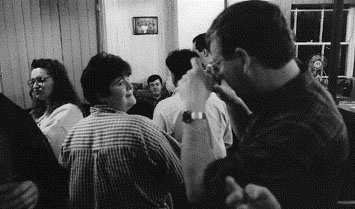
1. During the first number of documentary sessions, my behaviour as photographer was occasionally re-enacted, using signs from British Sign Language. While working with Dawn (in the chequered shirt), the chairman of the Deaf club put himself in my place and produced the most common British Sign Language (BSL) sign for 'to (be) photograph(editor)'.
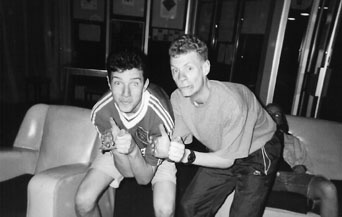
2. The photographs recorded by the Deaf youngsters reflected significantly more posing than did those of the hearing youngsters. Here posing is impromptu, and shows two friends of a Deaf photographer, signing 'to photograph', but using signs suggestive of old-fashioned box-cameras such as Kodak's Brownies. Probably reference is being made to such meanings as 'taking snaps' or 'happy- snappies'. Deaf humour occasionally references objects long out of use in signs of ridicule, such as a cranking movement to start a car, or holding separate ear and mouth pieces for an old-fashioned telephone.

3 - 6. This sequence narrates an event in the Deaf club during which a deaf toddler, recently provided with hearing aids, repeatedly swiped them out of his ears before finally bumping into the camera. This prompted Dawn (in the left corner of the last photograph) to make a remark about him growing up to be a real Deaf person, since sign language users often refrain from wearing hearing aids. They are of no use in visual-gestural means of communication, and in view of the educational experiences of many Deaf people, they are often symbolically associated with institutional or educational oppression.
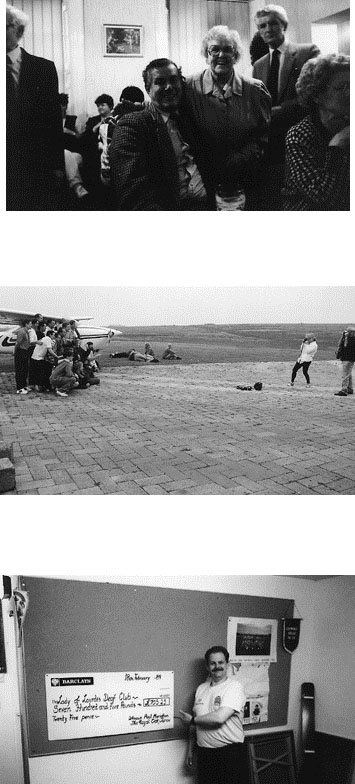
7 - 9. Posing was a regular activity during the photographer's presence in the Deaf club, and persisted even after a year of regular attendance. Posing came in different 'kinds', offering different sorts of associations to the viewer. For the first picture posing occurred spontaneous, evolving out of a moment of greeting and lasting for no longer than the release of the shutter. The second was a lengthy occasion during a parajumping outing of the Youth Club. The third photograph, 'pretend' posing with an oversized cheque (a donation that occurred over a year earlier) 'took the mickey' of a type of 'presentation' posing which accounted for the contents of a significant number of photographs in one of the magazines analysed. Posing generally also accounted for a significantly high number of photographs in that same magazine, the one most associated with presenting the British Deaf community's interests.
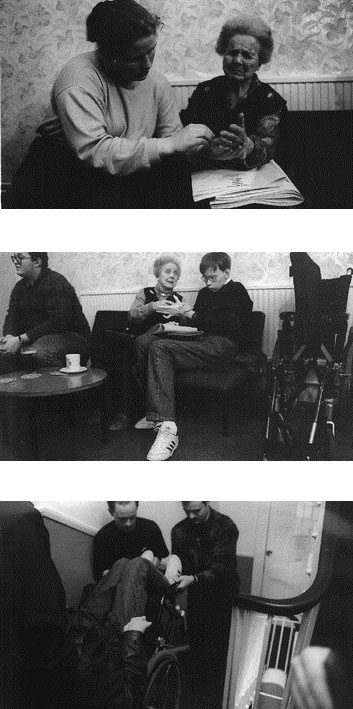
10 - 12. An elderly Deaf-blind lady was a frequent and very much appreciated visitor to the Deaf club-very rarely she was left without someone to converse with, and people of all ages found pleasure in her presence. The youngster in the wheel-chair was a much more infrequent visitor, partly due perhaps to the difficulties of access. I found there was a clear difference in the treatment afforded to both these people; whereas the youngster was treated with all the égards becoming to a guest, the lady was treated (while due attention was given to her requirements) pretty much as most anybody.
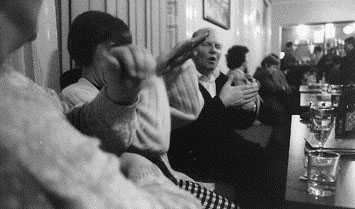
13. The Deaf club is suffused with what to a cultural outsider would seem 'visual ambient noise' - like pubs are with aural noise. For hearing outsiders like myself, it often takes considerable effort merely to work out who is conversing with who in a room: sign language allows one to converse with somebody at the opposite end of the room, so the 'spatial' patterning of conversations taking place criss-cross all overseeable space. The three people here were in conversation with different people at different tables.
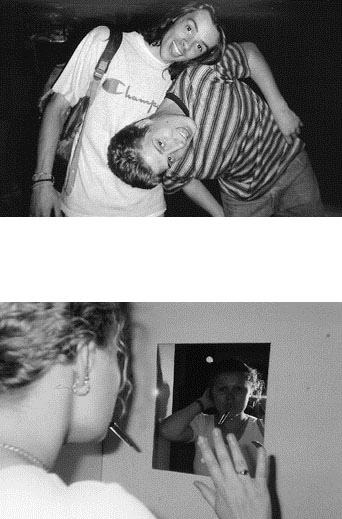
14 - 15. The photographs taken by the Deaf youngsters in particular contained frequent reference to 'playing' with visual or spatial arrangements. The photographs taken by the hearing youngsters were characterised by their narrative ordering, reflected in the negatives on a film being clearly sequenced according to the 'telling' of particular events. By contrast, the photographs taken by the Deaf youngsters were discrete (or 'within-frame') narrations: moving between photographs according to their original negative numbers rarely resulted in a temporally ordered presentation of a recognisable event; instead they seemed to present visual-spatial narratives of sorts.
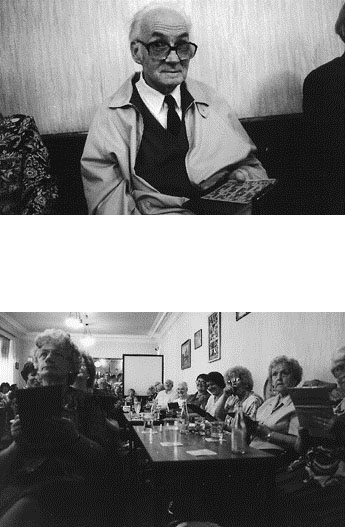
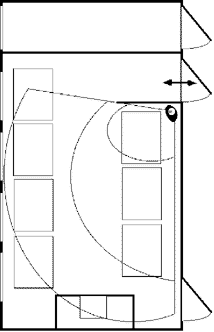
16 - 17 and diagram. The photographs I took of Mr. Phillips' evening out in the Deaf club, himself a long-standing member, suggested the idea of him using perceptual horizons. The diagram shows three 'horizons' of visual attention required on the part of Mr. Phillips in the course of an evening in the Deaf club. Early evening, during the bingo which was the main evening event for Mr. Phillips (second picture), his visual attention stretched throughout the room, incorporating the bingo-podium (bottom-end of the room in the diagram). During the 'middle-part' of the evening, his attention and conversations became limited to one side of the room only. Towards the end of the evening, his visual attention no longer stretched beyond his own table (see diagram), where his wife occasionally relayed significant events happening in other areas of the room to him. Managing perceptual strategies in order to avoid visual fatigue is perhaps more of a requirement for older Deaf people. Note that Mr. Phillips' place in the room - reserved for him as a regular - also cuts out the bustle at the bar-end (the space across the top of the diagram).
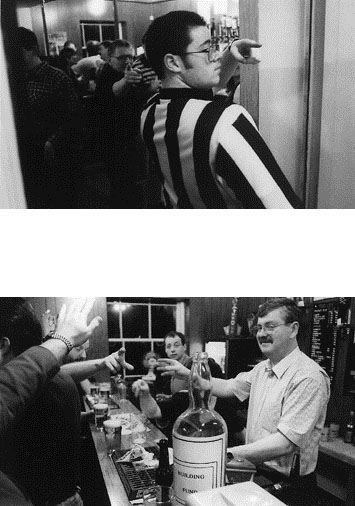
18 - 19. Two more examples of visual organisation. The request, in one place, for the attention of someone in a different part of the building was regularly 'relayed' by people passing on a person's sign name from one person to the next, getting their attention by pointing and waving (top). At the bar, similar strategies sort out who is ordering a drink from who (above). It is only in visiting a bar in a Deaf club that one realises that in 'hearing' environments bar-staff typically have come to you when you place your order: an irrelevant custom in a Deaf club bar.
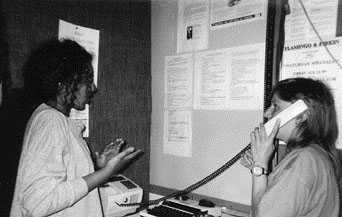
20. A Deaf youngster took this photograph of a friend using an interpreter's services to conduct a telephone call. Although the Deaf college is equipped with text telephones and BT offers 'TypeTalk', a relay service for hearing-impaired and Deaf people, the services of an interpreter are nevertheless frequently needed. But for Deaf people, the photograph may tell a richer story, drawing upon a historical awareness, and a sense of pride, of being Deaf. As it was put by the photographer: 'Show the way Deaf use hearing people to ring for them long time ago and see now minicom'.
![]()